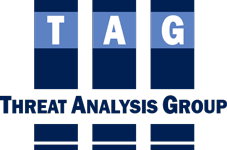Incident Background: On November 1, 2013, a man carrying an assault rifle opened fire inside Terminal 3 on a busy morning. Authorities believe the gunman targeted Transportation Security Administration workers. TSA officer Gerardo Hernandez was the first TSA employee to be killed on the job. Two other TSA officers were also shot and survived. An airline passenger was also shot and lived.
Key Findings and Recommendations:
Observation 1: Security and Incident Prevention (Page 14)
Personnel, procedures, and technology related to the security of the Airport and the public it serves must be layered and fully integrated to ensure a holistic an effective security risk mitigation program.
Recommendation 1.1: Evolve the LAX security program to reflect a more integrated assessment of security risk and provide for the ongoing development and management of mitigation measures.
Recommendation 1.2: Based on the risk assessment and updated security plan, consider the focus and structure of security functions to determine whether realignment and integration are needed.
Recommendation 1.3: With the benefit of recent vulnerability and risk assessments, take a risk-based approach to evaluating current security programs and explore intelligent use of technology.
Observation 4: Alert and Response Mobilization (Page 26)
The right systems, clear lines of responsibility, and well-documented processes for alert notification are critical to avoiding delay in mobilizing a response during the early stages of any emergency.
Recommendation 4.1: Explore and make needed enhancements to emergency alerting methods, technologies, and protocols to include 911 call handling and a more reliable Red Phone system.
Recommendation 4.2: Ensure singular responsibility for administrating notification processes and systems as an integrated program and perform audits, tests, and updates on a regular basis.
Recommendation 4.2 [sic]: Address core staffing and augmentation support needed in the LAWAPD Communications Unit and in the communications and call handling functions of the DOC/ARCC.
Observation 6: Evolution of Incident Command (Page 32)
Disciplined build-out of the incident command structure and deliberate integration of all response partners is key to achieving unity of command and leveraging the full capability of all available assets.
Recommendation 6.1: Make efforts to address the naturally occurring organizational bias that may inhibit full integration of public safety and civilian operations in unified incident command.
Recommendation 6.2: Expand LAWA’s Readiness Assessment and Performance Improvement Drills to train and evaluate staff in executing incident command and the build-out of an ICS organization.
Recommendation 6.3: Advance on-going “position-specific” training for police, civilian personnel, and public safety partners to ensure readiness to fulfill key roles in the incident command structure.
Observation 8: Department Operations Center (Page 41)
Achieving the DOC’s full potential requires synchronizing the ICP/DOC interface, trained staff, and processes to support decision-making and resource management, and senior leadership participation.
Recommendation 8.1: Resolve staffing and process constraints that limit the DOC’s ability to develop a common operational picture and engage in coordinated incident planning with the ICP.
Recommendation 8.2: Conduct training and exercises that require competence in the exchange of situational awareness, coordinated planning, and joint decision-making between the ICP and DOC.
Recommendation 8.3: Establish an Executive Command Group of top senior leadership at LAWA and supplement it with senior leaders from other organizations as appropriate to the situation.
Observation 10: Public Mass Notification (Page 51)
Developing and integrating a full range of strategies and systems for public alert and mass notification are vital to ensuring awareness, safety, and comfort of those impacted by a crisis.
Recommendation 10.1: Fully integrate and exploit the potential of an LAX-wide Mass Notification System, capitalize on existing public address capability, and link these systems back to the LAX DOC.
Recommendation 10.2: Implement a mass notification strategy that capitalizes on all forms of real-time communication with the public, whether controlled by LAWA, its tenants, or regional partners.
Observation 13: Evacuation and Shelter-in-Place (Page 60)
Terminal evacuations must be enabled by effective public communications, personnel trained to guide and assist evacuee behavior, and rapid mobilization of additional help to ensure public safety.
Recommendation 13.1: Train LAWA and tenant personnel in shelter-in-place and evacuation procedures to ensure the safety of evacuees, particularly those with disabilities or special needs.
Recommendation 13.2: Support ongoing awareness of emergency evacuation and sheltering procedures through a sustained information campaign to include public address announcements.
Recommendation 13.3: Plan for rapid mobilization of LAWA police or civilian staff to any shelter-in-place or evacuation location to enable safe containment or evacuee marshalling and transport.


